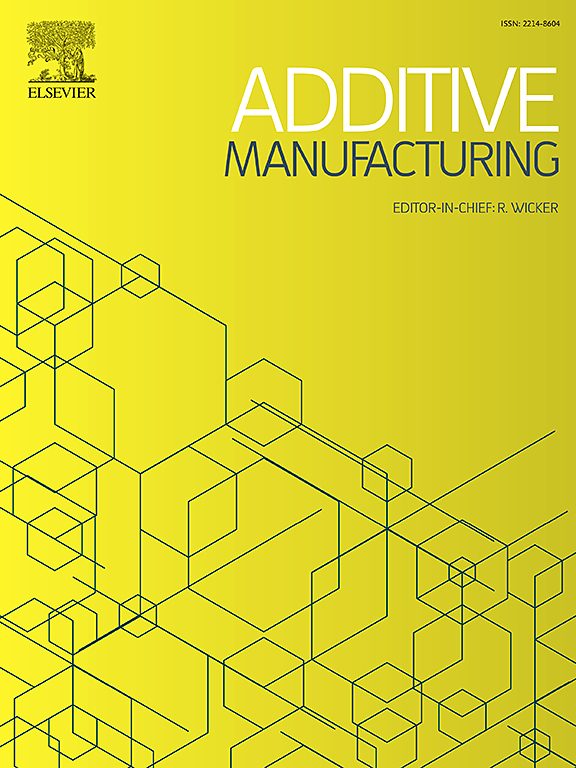Enhancing interfacial toughness of 3D printed bi-material polymers via mechanical interlocking and engineered fiber bridging
IF 10.3
1区 工程技术
Q1 ENGINEERING, MANUFACTURING
引用次数: 0
Abstract
Combining materials with distinct properties enables the fabrication of complex structures unattainable with a single material. Hybrid structures, such as those combining stiff and flexible materials, have potential applications in morphing structures, medical prosthetics, and sports goods. The performance of these structures relies heavily on the bonding at the material interface, especially with flat interfaces. Poor bonding can lead to structural failure. This study investigates the bi-material 3D printing of Polylactic Acid (PLA) and Thermoplastic Polyurethane (TPU). PLA is chosen for its environmental friendliness and mechanical properties, while TPU is selected for its flexibility and deformability. The main problem is the weak bonding between PLA and TPU in Fused Filament Fabrication (FFF), often causing failure in the final object. We introduce a methodology to emulate and control the 'fiber bridging' effect occurring in Fiber-Reinforced Polymers (FRP), which enhances interfacial strength. By designing specific patterns and strategically sequencing materials, we create robust mechanical bonds between PLA and TPU. These interface designs significantly increase toughness, improving both bi-directional and unidirectional composites by up to two orders of magnitude. Furthermore, the proposed approach holds potential for application in other multi-material systems, making it a promising strategy for a broader range of material combinations.
求助全文
约1分钟内获得全文
求助全文
来源期刊

Additive manufacturing
Materials Science-General Materials Science
CiteScore
19.80
自引率
12.70%
发文量
648
审稿时长
35 days
期刊介绍:
Additive Manufacturing stands as a peer-reviewed journal dedicated to delivering high-quality research papers and reviews in the field of additive manufacturing, serving both academia and industry leaders. The journal's objective is to recognize the innovative essence of additive manufacturing and its diverse applications, providing a comprehensive overview of current developments and future prospects.
The transformative potential of additive manufacturing technologies in product design and manufacturing is poised to disrupt traditional approaches. In response to this paradigm shift, a distinctive and comprehensive publication outlet was essential. Additive Manufacturing fulfills this need, offering a platform for engineers, materials scientists, and practitioners across academia and various industries to document and share innovations in these evolving technologies.
 求助内容:
求助内容: 应助结果提醒方式:
应助结果提醒方式:


